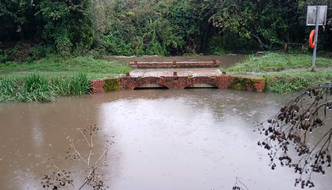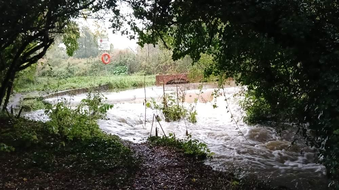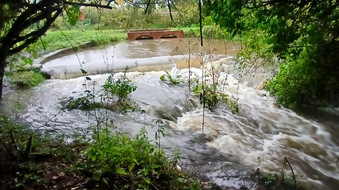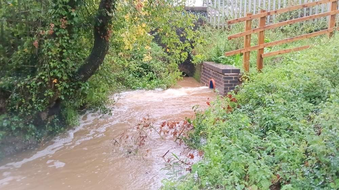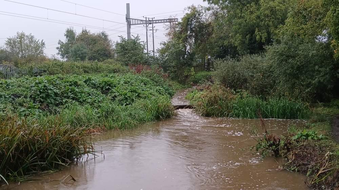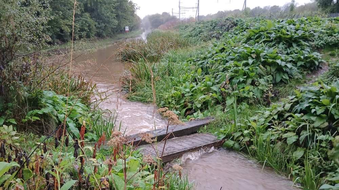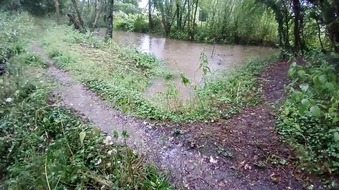For once, the canal at Templars Firs had enough water this summer, but in some years the level drops several inches after evaporation. The only time there’s an obvious flow is after heavy rain.
Although the canal has kept its level, the wetland habitat was dry until mid-September. The water comes from drains running alongside the nearby railway track and the overflow pipe from the wetland habitat can be seen gushing water into the canal in a white flume.
At the east end, there’s a drainage channel that takes its water from as far away as Hay Lane. During the summer, Network Rail has re-built a storm water culvert that had been washed away a year or so ago. They have also removed tree trunks that blocked the storm water on its way under the little bridge and into the canal. WBCT volunteers spent several recent work parties removing the reeds that were blocking the flow. But did it work?
The canal carried huge amounts of storm water from the east end towards Woodshaw spill weir. The silt-laden water met slightly cleaner storm flows rushing down from Hancock’s Water and from the north side of the canal and we could see the two flows merge into one as they roared under the towpath and then over the spill weir.
Storm flows also travel west from Hancock's Water junction towards the slipway. After very heavy rain, the level rises to cover the towpath at Noremarsh Bridge. The small spill weir known as the Blockhouse can be completely full. The Angling Club held its tournament along here recently.
So most of our water is supplied by Network Rail and by farm drains east of Woodshaw, though we get a fair amount from the storm drains of Stoneover Lane and Bincknoll Lane. One day, water from Swindon will flow through a new canal tunnel under the motorway to join our canal at Studley Grange. The sooner, the better!
To pledge your support for this work, be a supportive member from just £1.50 a month, or make a donation here https://www.wbct.org.uk/get-involved/donate
By Steve Bacon, Royal Wootton Bassett

